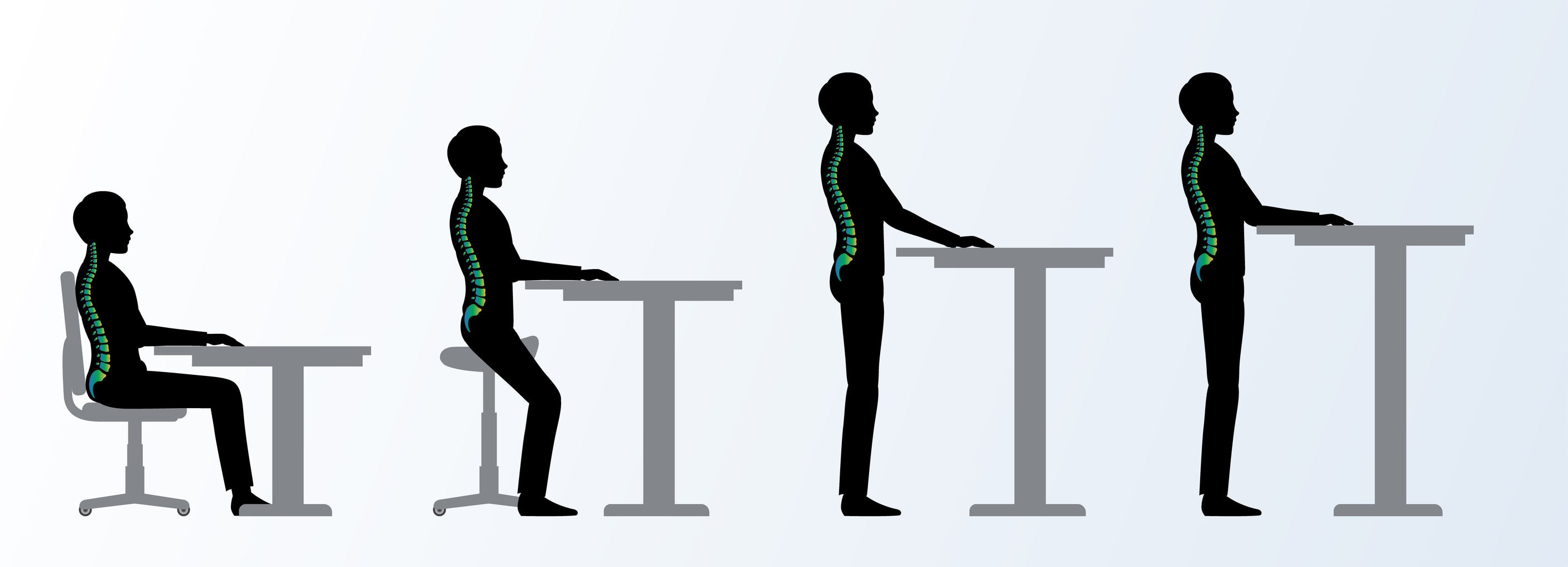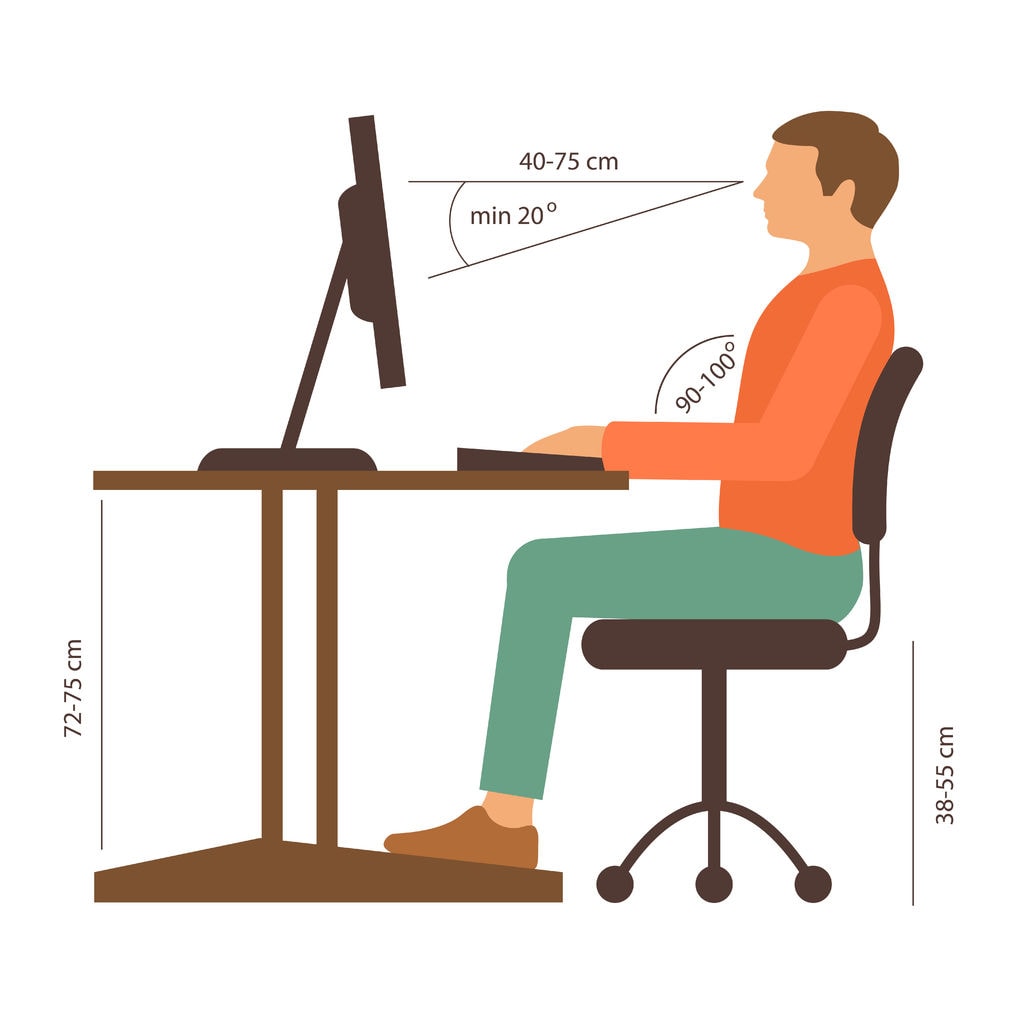Physio Logic’s Chiropractor, Dr. Mike Distler, discusses why we slouch, our spinal support systems, and how to prevent common spinal conditions/diseases such as disc herniations, ligament inflammation or damage, and osteoarthritis. He provides 5 simple steps to improve your posture by helping the body resist postural stress and prevent low neck and back pain.

So, Why Do We Slouch?
Current studies indicate that the average US adult sits for 8 hours a day and that prolonged sitting is a risk factor for neck and low back pain. Proposed solutions such as standing desks, ergonomic chairs, and “sitting up straight” are well-intentioned and occasionally helpful, but can still result in a slouched position or other forms of postural stress.
The human spine has natural curves to resist load on the spine in an upright, weight-bearing position. The cervical and lumbar spine have a lordosis, or forward convex curve. The thoracic spine and sacrum have a kyphosis, or backward convex curve. The musculoskeletal system is comprised of soft tissue structures designed to provide both active and passive stabilization to the spine. Muscles move our skeletal system, but they also help to provide resistance against movement. They also mitigate forces exerted on passive stabilizing structures such as ligaments, joint capsules, and intervertebral discs. A prolonged seated or standing position fatigues the muscles that stabilize the spine from the forces of gravity and body weight, just as a lifter or runner becomes fatigued when performing exercises at the gym. When the fatigued muscles no longer provide stability, the spine must rely on the passive structures of the musculoskeletal system for support. Without muscular support, the spine gradually loses its natural cervical and lumbar lordotic curves and becomes more kyphotic or slouched. Initially, slouching can provide a feeling of relief due to relaxation of the fatigued muscles; however, in the long term, repetitive or prolonged stress to the passive structures of the spine can result in injury to those tissues. Common examples include disc herniations, ligament inflammation or damage, and osteoarthritis.
5 Easy Tips for Practicing Better Posture
I recommend using a multi-faceted approach to help the body resist postural stress and prevent low neck and low back pain:
1) Ergonomic Setup
Do not reposition your body to fit your work area. Establish a comfortable, but well-supported position and rearrange your work area to fit that position. The most common mistake is sitting too far away from your desk or computer. The elbows should be bent at 90 degrees and you should not have to reach forward to type or use the mouse. The computer screen height should be positioned at eye level and you should not have to lean forward to read from the computer screen. For laptops: position the screen at eye-level but use an external keyboard and mouse to allow for proper arm positioning.

2) Movement
Even with a great ergonomic setup, your muscles will eventually fatigue. Changing your position allows for recovery of fatigued postural muscles. If you have the option, alternate between a sitting and standing desk every 20-30 minutes. If sitting desk only: take 2-5 minute breaks every 20-30 minutes. Perform exercises, walk around, or simply stand up.
3) Strengthening
Common areas that require improved stability and motor control are the muscles of the core, neck, and shoulder blades. To address these areas appropriately, perform an evaluation with a chiropractor or physical therapist.
4) Mobility
Common areas that require improved joint range of motion and/or tissue extensibility are the thoracic spine, hips, and shoulders. To address these areas appropriately, perform an evaluation with a chiropractor or physical therapist.
5) External Support
Occasionally sitting for an extended period of time is unavoidable (e.g., meetings, travel, entertainment). Use lumbar braces and neck travel pillows to provide additional support for the natural lordotic curves of the lumbar and cervical spine. Alternatively, roll up a jacket, blanket, towel, or pillow to place in the gap created between the low back and the back of the seat or the neck and the headrest. The roll should be large enough to provide support, but small enough to prevent pushing the midback and head away from the seat and headrest.
For physiologic Your health is our focus
Interested in improving your posture and reducing back pain? Schedule an appointment with one of our qualified chiropractic doctors today. Fill out the form below to get started.
<!– [if lte IE 8]>